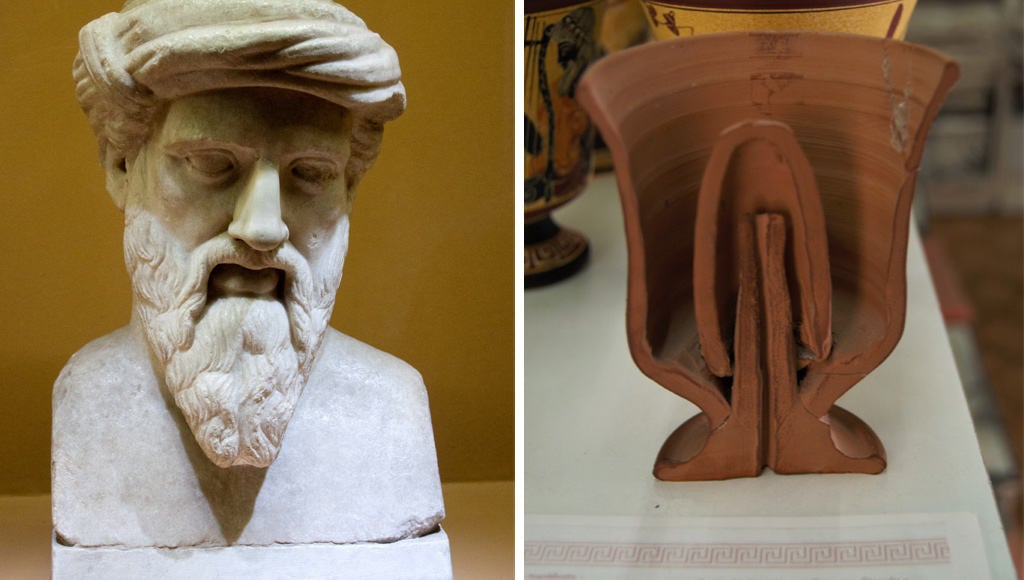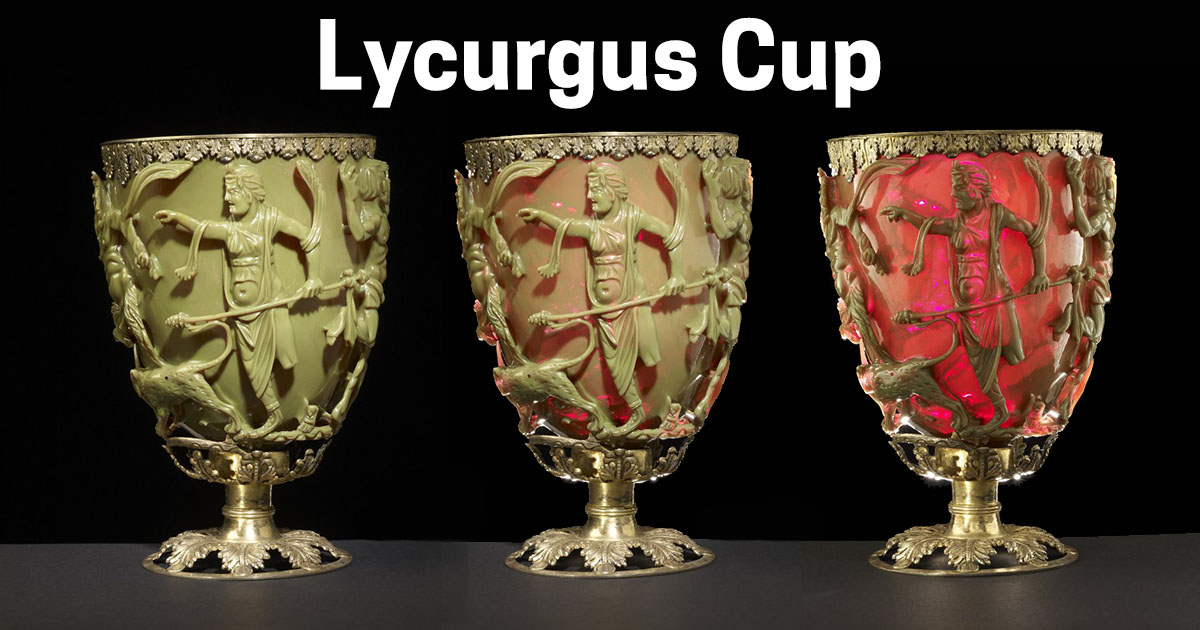
The “Lycurgus Cup” is one of the first to implement nanotechnology throughout history. Modern science has demonstrated exactly how advanced the processes behind the cup’s manufacture were, even if it is doubtful if the makers realized the explanation for the extraordinary optical qualities of the cup.
This cup has a unique feature that makes it change its color with the change of the light direction or intensity. How did this cup perform such a stunning task? And was nanotechnology used in its manufacturing process? Did the ancient Romans discover this technology at that time, or was it just a coincidence?
Let’s find out.
The Story Behind the Cup
Lycurgus Cup is a mysterious antique from the end of the Roman period (4th Century AD). It’s a “cage cup,” which means that the primary cup is encircled by a beautiful “cage” pattern. The design of the cage here portrays King Lycurgus of Thrace’s anger and death.
2/3. He’s attacking the vines with an axe, so I’m assuming it is the legend of Dionysus and King Lycurgus. Musee Gallo Romain, France. Photo Steven Cockings #romanmosaic pic.twitter.com/PUXSd5N6JG
— RomanMosaicWorkshops (@romanmosaics) September 19, 2018
At least one Greek and Roman story shows King Lycurgus as trying to kill Ambrosia, a follower of the god Dionysus (Bacchus for the Romans). According to this version of the legend, Ambrosia was transformed into wine by the gods who gathered around the king and killed him. On the cup relief, two of Dionysus’s followers mock the hapless king.
Nanotechnology Properties
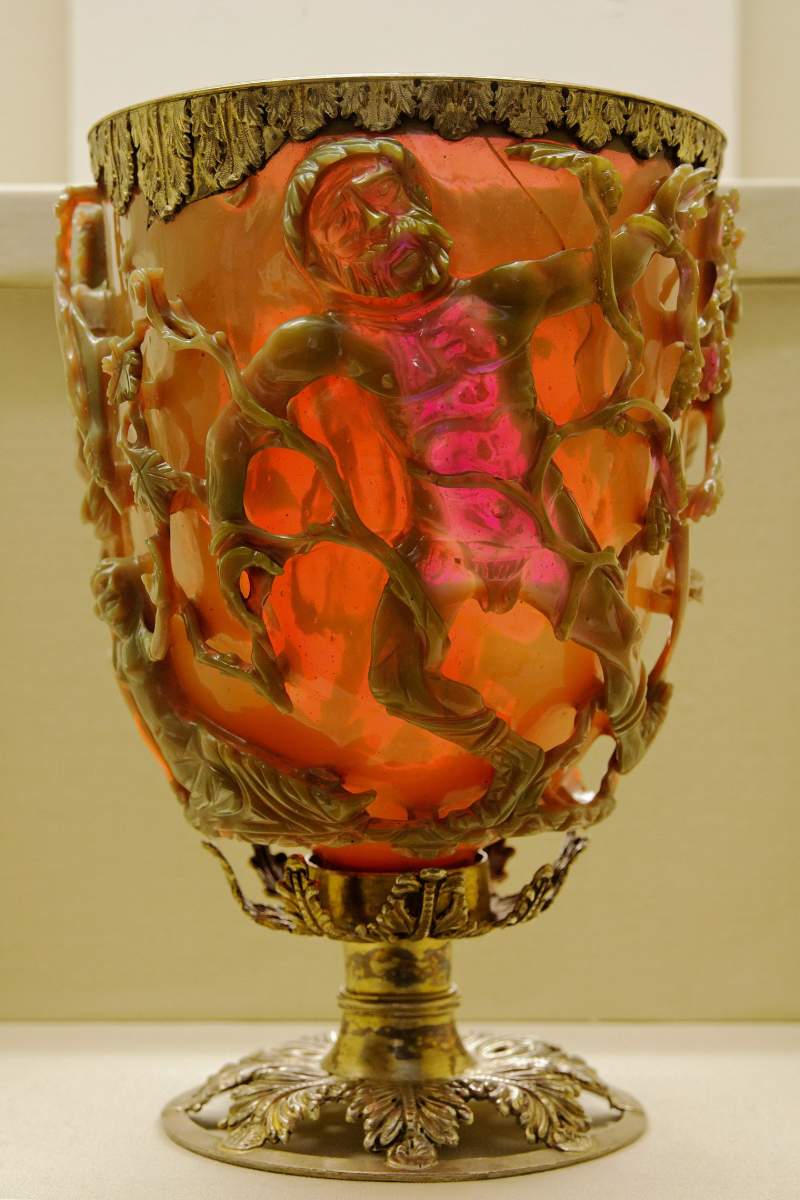
In addition to being a stunning piece of art, the “Lycurgus Cup” is also extremely valuable. With valuable metals like silver and gold in its construction, the cup is priceless.
The cup’s rim is decorated with a silver-gilt leaf band, and the foot has silver-gilt vine leaves in an open-work design. Historically, it’s believed to be from the fourth century AD or before.
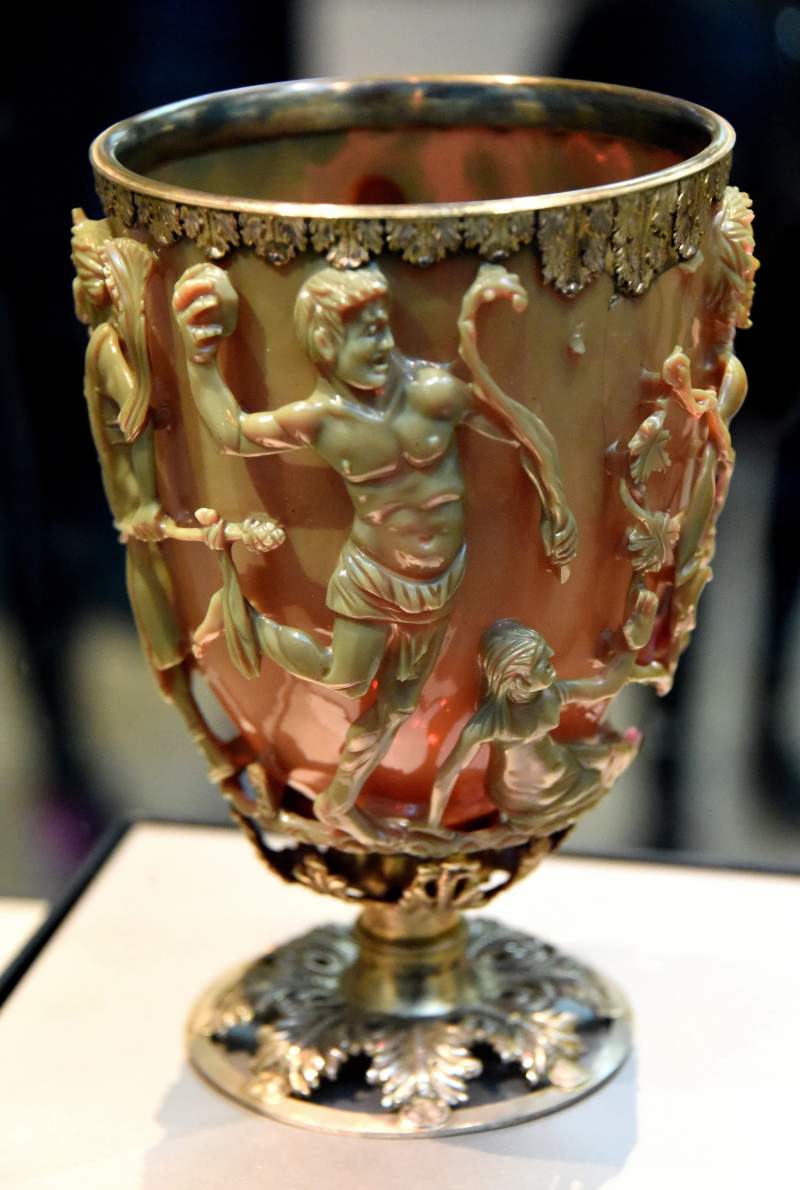
In terms of nano-materialistic qualities, the “Lycurgus Cup” stands noteworthy. It appears green in color when viewed under bright, direct light.
However, when the cup is lit from the inside or backlit, the cup’s major reliefs miraculously turn red. The king’s picture also changes to a slight shade of purple.
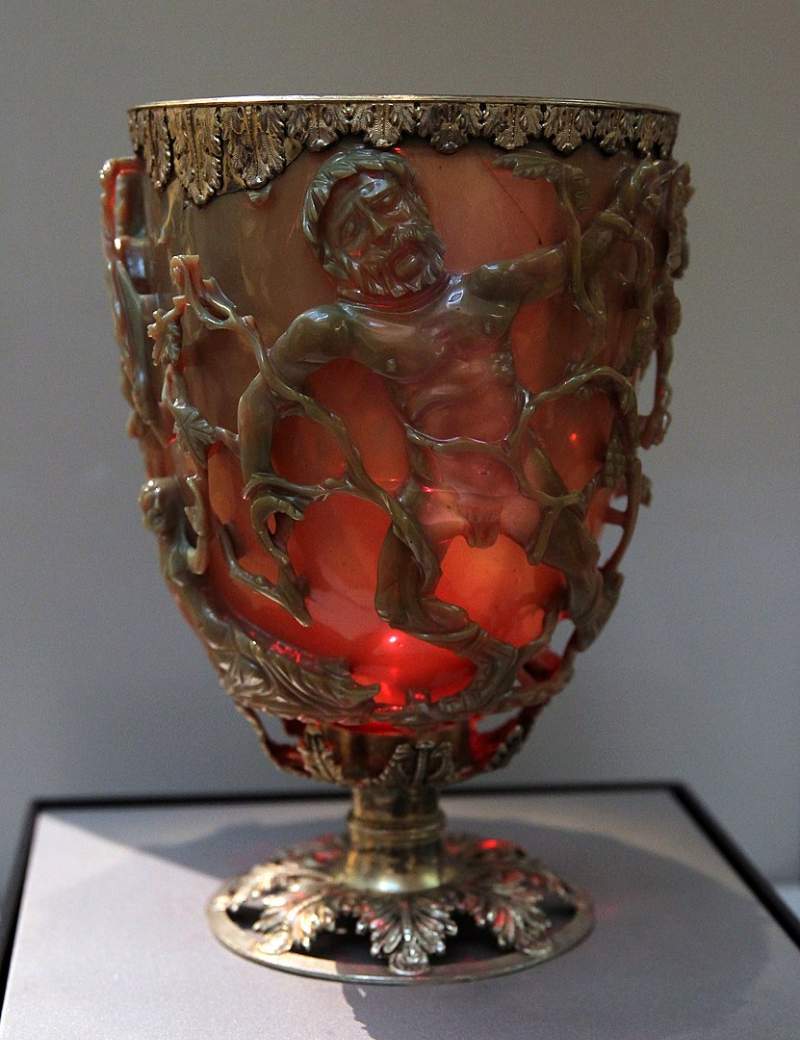
Scientists didn’t discover why this happened until the 1990s, and it’s uncertain if the Romans did. The presence of nanoparticles, silver 66.2 %, 31.2 % gold, and 2.6 % copper, up to 100 nm in size, spread in a glass matrix was discovered to be responsible for the dichroism (two colors).
The gold particles absorb light at a wavelength of 520 nm, resulting in the reddish color displayed. The purple color is caused by bigger particles absorbing light, whereas the green color is caused by colloidal dispersions of silver particles with a diameter of more than 40 nm scattering light.
This video shows changes color and appears like transparent red:
The Manufacturing Process

Making the Lycurgus cup is one of many old crafts that has been lost by time. There is just one complete example of this method left: the cup itself. To make dichroic glass (a color-changing glass), Western civilization appears to have found the process only during the mid-20th century.
For its purposes, NASA, on the other hand, employs nanotechnology (gold and silver nanoparticles), an area of material science that was surely unavailable to ancient Romans. So, how did the Romans manage to infuse a glass cup with gold and silver nanoparticles?

According to what I’ve read, molten glass is mixed with nanogram quantities of gold or silver dust before being diluted with additional molten glass until the ratios are as low as possible. However, I’m unsure of how the gold and silver dust is broken down from dust size to nanoparticle level – indeed, this process is the lost secret.
Accident or Intention
Because it’s unclear how the Romans manufactured the glass, there’s some controversy regarding whether it was done “by accident” or not. Suppose the Romans had some sort of glass-blowing plant next to a goldsmith’s shop. In that case, some believe that kilns or equipment somehow had tiny gold and silver particles on them, which somehow entered the cup in the glassmaking process.

However, there’s a chance that the Romans had some insider knowledge of glassmaking that we don’t. In ancient Rome, glassmaking was a relatively popular job, but because so much glass was recycled, there aren’t many Roman glass fragments in museums now.
A society where a large number of individuals work “empirically” with glass on a regular basis could learn something about the process of glassmaking that we don’t know now. Who knows?!
Where is it Now?
The “Lycurgus Cup” is largely believed to have spent the overwhelming majority of the intervening years above ground because of its outstanding state. Perhaps it was taken out of a grave early on in its existence, or perhaps it was stored in the church’s treasures like many other magnificent Roman artifacts.
The Lycurgus Cup is the only complete example of colour-changing dichroic glass from ancient Rome.
The glass contains nanoparticles of gold and silver – this makes it turn from opaque green to translucent red when light is shone through it https://t.co/5nKrGE6Gc1 pic.twitter.com/A3jMa5z27I
— British Museum (@britishmuseum) March 26, 2019
We may never learn the complete story of the object’s past, but we do know that it was owned by Baron Lionel Nathan de Rothschild sometime in the 1800s. Afterward, it was given to the British Museum in 1958, where it has been kept safe forever.
Visit the British Museum website to find more.

